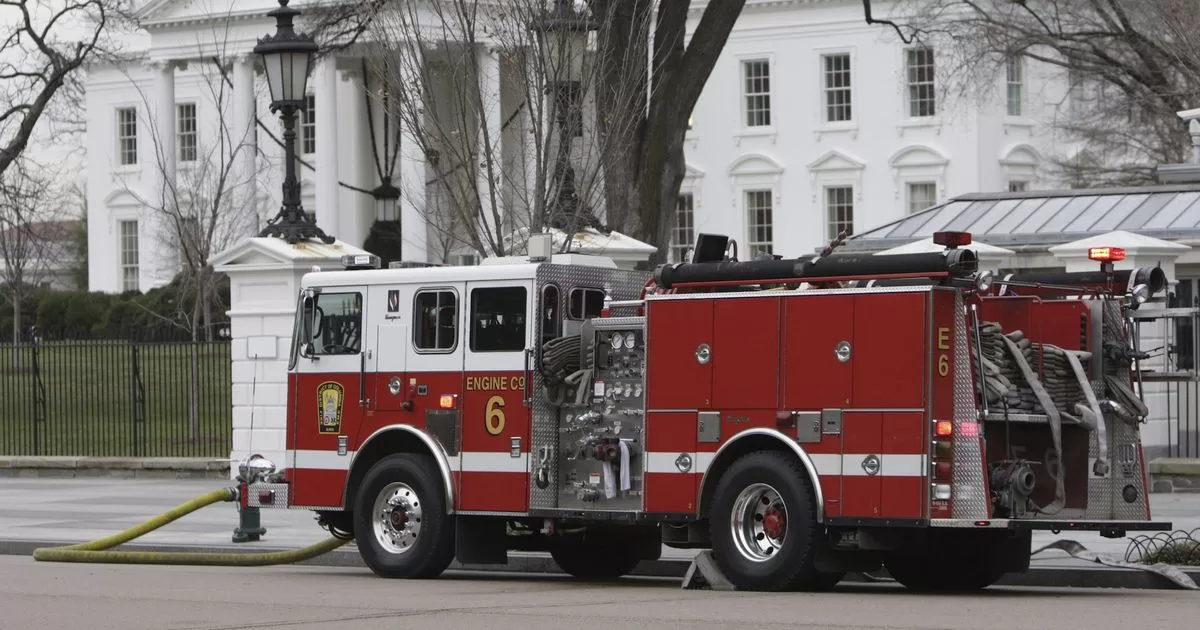The sirens sounded at 2:00 am in Rock Valley, Iowa, population 4,200, where residents of hundreds of homes were asked to leave because the Rock River could no longer absorb the rains that have battered the region. The city lacked running water because the wells were unusable.
Mayor Kevin Van Otterloo said a state helicopter was on the way to offer help, but the operation was suspended after some boats were able to reach stranded residents.
“It has rained a lot,” he declared. “We had 4 inches (10 centimeters) last night in an hour and a half. Our soil can no longer absorb any more,” she explained.
Governor Kim Reynolds declared a state of disaster in 21 counties, including the Sioux, which includes Rock Valley. In a video recorded by a drone and published by local police, no streets were visible; just rooftops and treetops peeking above the water.
High temperatures
Elsewhere in the United States, the heat and humidity continued. The National Weather Service indicated that approximately 15 million people were under heat warning -the highest alert level-, while another 90 million were under a heat alert. The lives of millions of residents across the country have been disrupted by days of unusually high temperatures.
Last year, the United States experienced the highest number of heat waves since 1936, according to experts. An analysis of data from the Centers for Disease Control and Prevention found that excessive heat contributed to more than 2,300 deaths in the country, the highest number in 45 years of records.
Temperatures near 37.8 degrees Celsius (100 Fahrenheit) were expected in Washington, D.C., and Richmond, Virginia., while Philadelphia, Newark, New Jersey; Columbus Ohio; and Detroit were preparing to hit 90°F (32°C).
Heat-related hospital visits in New York state recently were 500% higher than an average day in June, according to the Department of Health.
“We still have this prolonged heat wave in parts of the Ohio Valley and in the Northeast,” said meteorologist Marc Chenard. “We will have a little relief at the beginning of the week, at least in the eastern United States, the northeast, but in general above normal temperatures are going to cover a large part of the country even into next week,” he added.
In southeastern Michigan, DTE Energy said it 7,400 customers were without power Saturday afternoon due to storm-related outagescompared to 75,000 a few days ago.
A wind chill of around 37.8ºC (100ºF) did not prevent the Florida couple Judy and Bill Watson from attending the Tigers’ game against the White Sox at Comerica Park in Detroit. His afternoon visit was a milestone: Bill Watson has now attended games in all Major League Baseball parks.
“We are from Florida. Maybe you’re interviewing the wrong people about the heat,” the 71-year-old Bradenton native said with a smile. “We drink water, or beer occasionally. “We are happy that the game was not suspended due to rain,” he said.
Across the country in California, temperatures in the Central Valley were expected to reach as high as 106°F (41.1°C), and the National Weather Service issued a high temperature advisory until 8 p.m. Nearly 4,000 Sacramento homes and businesses were without power for less than an hour at noon, the Sacramento Bee reported.
They evacuate due to flooding
Flooding caused problems in southeastern South Dakota and northwest Iowa. Several highways were closed, including a crucial stretch of Interstate 29 south of Sioux Falls that was later reopened. Sioux Falls, the state’s largest city, received more than 7 inches (17.7 centimeters) of rain in three days.
In Iowa, several wastewater treatment plants lost power in the towns of Hawarden and Spencer, which together have 14,000 residents.
Aiden Engelkes said he and his girlfriend grabbed clothes, their cats and bottles of water and left their flooded apartment on the first level to go to a dry space with a friend on the fourth floor. His Chevy truck was outside underwater, except for a small part of its antenna. Across the street, he said, some of his friends took shelter on a roof waiting for help.
“It’s terrifying,” said Engelkes, 20.
Although light rain was forecast toward the middle of next week, the National Weather Service predicted more flooding ahead of it in the area, as floodwaters moved downstream along several northern iowa rivers.
Flooding also caused the closure of state highways and rural roads in southern Minnesota. Windom, a town of about 4,800 people, received 1.25 inches (3.2 centimeters) of rain on top of earlier heavy downpours, and the Des Moines River there reached a record level.
“We’re struggling just to keep up with them, putting up barricades,” said city council member Jenny Quaid. “We put up barricades and suddenly the water rises so much that the barricades are underwater again,” she said.
In New Mexico, heavy rains and flash flood warnings prompted authorities to order some mandatory evacuations and set up shelters for displaced residents.
The National Weather Service announced a flash flood emergency from Friday night to the early hours of Saturday. Affected areas included the city of Las Vegas, New Mexico; and communities near Albuquerque.
In Ruidoso, a town in the mountains of New Mexico, full-time residents will be able to return Monday after they were forced out by wildfires, although daily life will not return to normal.
“They’re going to have to bring food for a week, they’re going to have to bring drinking water,” Mayor Lynn Crawford said on Facebook.
Source: With AP information




